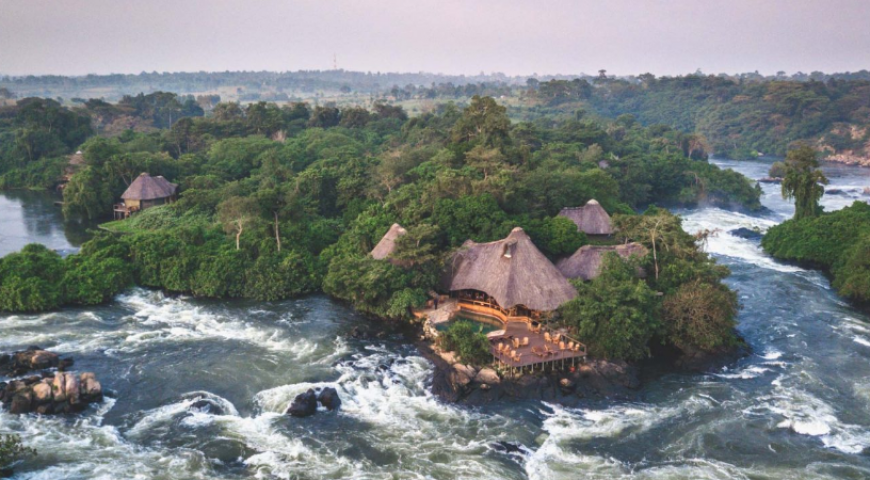
TOURISM IN WEST NILE
Tourism in West Nile sub-region is one of the three regions in Northern Uganda, lying mainly to the west of the River Nile and comprises nine districts which include Arua, Adjumani, Koboko, Maracha, Moyo, Pakwach, Nebbi, Yumbe, and Zambo. The sub-region is boarded by the Democratic Republic of Congo to the south and west, South Sudan to the North, and Albert Nile to the East. West Nile has various tourist attractions in the mentioned districts and different wildlife species in the region.
The region is blessed with tourist attractions like the Ajai game reserve, Miridua falls, Barifa Forest, Biku the smallest chapel, places of worship, and mountains, among others.
ATTRACTIONS AND ACTIVITIES
Miridua falls: Located on River Oluffe 20km on Arua-Koboko road and 20 minutes out of Arua town. The falls were named after the Chief made a declaration in 1956 after a village assembly at Amibidrio parish after asking the locals the name and they told him Iyi kuru(meaning rough flowing water) so the water that flows out of the rocks is so magnificent and beautiful. the place is so nice for photos. A visit to the falls is so memorable.
AJAI GAME RESERVE
Is a small conservation protected area that had a large number of Rhinos in Northeast Uganda dominated by a large island surrounded by seasonally flooded swamps and wooded savanna. It is located on the western bank of the White Nile approximately 40km east of Arua. The reserve was gazetted in 1965. The reserve harbors wildlife species like the leopards, Uganda kobs, Sitatunga, Hippos, Black and White colobus, Warthog, Buffaloes, DikDik, Monitor Lizards, Olive Baboons, Zebras, Puff adders, Foxes, Pythons, Green Snakes.
BARIFA FOREST: The forest was gazette in 1948, and the breeze from these eucalyptus trees feels very refreshing especially when the temperatures are right on the top of the lover’s rock. The forest is a large forest near the town of Arua situated to the southeast of Arua hill. It features compact grass formations, and a large number of tree species typical of the area, the forest is also beautiful for the bird species, and also the Stadium is named after the First Female Olympic Medalist Dorus Inzukuru which is built in the middle of the forest.
BIKU : This is the smallest church in Uganda that accommodates 3 Christians including the priest. the chapel measures a width of 2.5 meters, and a height of 8ft. the church was founded by the retired Archbishop His Lordship Henry Luke Orombi with a Korean pastor called Song in 1996 and discovered by two United Nations workers Solomon and Miburu while driving up the Biku Hill.
It is believed that those who come here are able to meet with God, especially by having a vision for their future and strengthening their faith. The chapel has nine prayer points that the founders thought would create a comfortable atmosphere for the congregation to pray and meditate on God’s word.
There is a custodian at the chapel who also acts as a guide and takes visitors around the different prayer points.
MOUNTAIN WATI: Found in the Terego district known as the tallest in West Nile though it lies in a lower area above sea level. According to Mythology, that is where the Lugbara origin started. Mt.Wati was inhabited by big snakes/serpents with Mysterious snake lights for trapping prey at night. Dribidu was the first Lugbara to take his leprous wife to be healed at the mountain. wildlife species found there include the porcupines and tourists who go there can take the opportunity for mount climbing and also sightseeing because on the top of the mountain you can able to view the various homesteads around the mountain.
MOUNTAIN LIRU: Is found on the border between Koboko and Maracha and it has a customized view when you sit on the Komendaku rock. On top of Liru there is a crater lake believed to connect to the River Nile underground, sometimes when it rains heavily you see the mountain overflowing into the green forest around its foot. Mt. Liru is the third mountain of the West Nile and the panoramic view on Arua Hill could give you a glimpse of two of the Big tree and the circle that binds the watershed plateau.
Tourists who climb write their names on the rocks while they take them as souvenirs and for research. Wildlife species found at Mt. Liru include Red monkeys, Rock badges, and porcupines.

